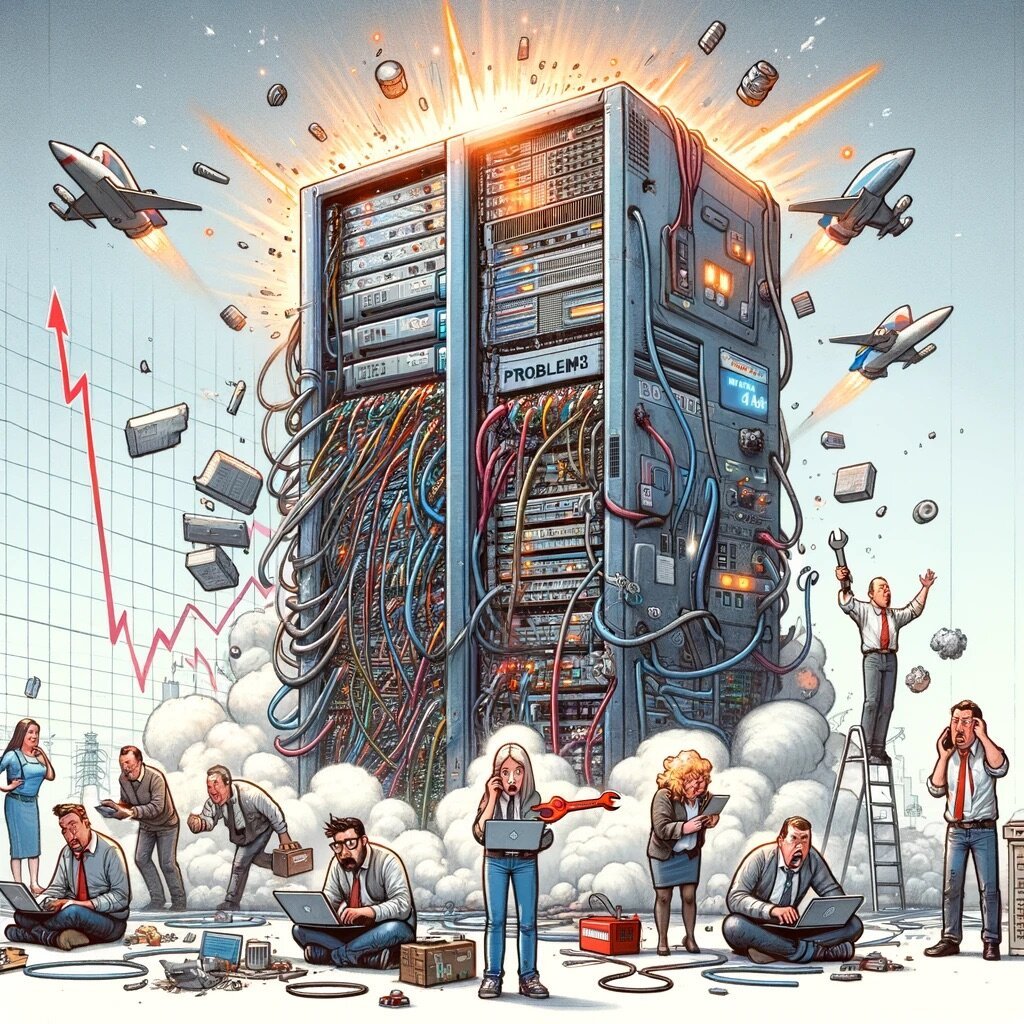The only thing that scales in IT are problems

In the heart of Silicon Valley, nestled among coffee shops buzzing with the sound of startups pitching their next big idea, was a small but ambitious tech company, CodeBlaze. They had just secured a hefty investment to scale up their operations. The CEO, a visionary with grand plans but little patience for the minutiae of IT infrastructure, declared it was time to “go big or go home.”
The IT department, a close-knit team of three, had been the backbone of CodeBlaze since its inception. There was Alex, the systems architect, whose calm demeanor had seen the company through numerous outages and crashes. Sam, the network engineer, could weave firewall rules and VPNs like an artist. And then there was Jamie, the fresh-out-of-college developer, whose enthusiasm sometimes outpaced their experience.
When the CEO announced the scale-up, the IT team was initially thrilled. That thrill quickly turned into a whirlwind of chaos.
The order was to triple the server capacity, quadruple the bandwidth, and, somehow, make the system foolproof overnight.
The first sign of trouble came when the new “state-of-the-art” server arrived. It was a behemoth that barely fit through the door, with more flashing lights than a disco ball and a manual thicker than a dictionary. Alex, armed with nothing but a tiny wrench and a hopeful smile, attempted to make it fit into their existing setup.
The server, however, had other plans and promptly refused to communicate with any of their legacy systems.
Meanwhile, Sam was in a battle of wits with the new, supposedly faster network setup. What was promised to be a plug-and-play operation turned into a puzzle that not even the most cryptic escape room could match. Cables everywhere, IP conflicts like it was going out of style, and a firewall that was more of a fire hazard.
Jamie, eager to contribute, decided to implement some “cutting-edge” code changes to optimize performance. The result was an infinite loop that sent the CPU usage skyrocketing and the temperature soaring to levels that would make a sauna jealous.
The breaking point came during a live demo with potential clients. As the CEO proudly began to showcase their system, the screen froze, the server started smoking, and the lights flickered—a perfect storm of IT despair.
In the aftermath, the IT team sat amongst the ruins of their once-stable system. Alex was holding the manual like a lost traveler with a map, Sam was tangled in a web of Ethernet cables, and Jamie was googling “how to undo an infinite loop.”
Just then, the CEO burst in, panic in his eyes, asking what went wrong. The team exchanged weary glances, and it was Jamie who finally spoke up, “We scaled alright—scaled right into a disaster. “
“Turns out, the only thing we scaled up was our problems.”
The room went silent, then, almost on cue, everyone burst into laughter. It was the kind of laughter that comes when you’ve hit rock bottom and there’s nothing left to do but look up. They knew the road ahead would be tough, but they also knew they’d get through it together, one problem at a time.
And so, the legend of The Great Scale-up Fiasco became a cautionary tale at CodeBlaze, a reminder that scaling up is about more than just bigger servers and faster networks; it’s about navigating the chaos, one misadventure at a time.